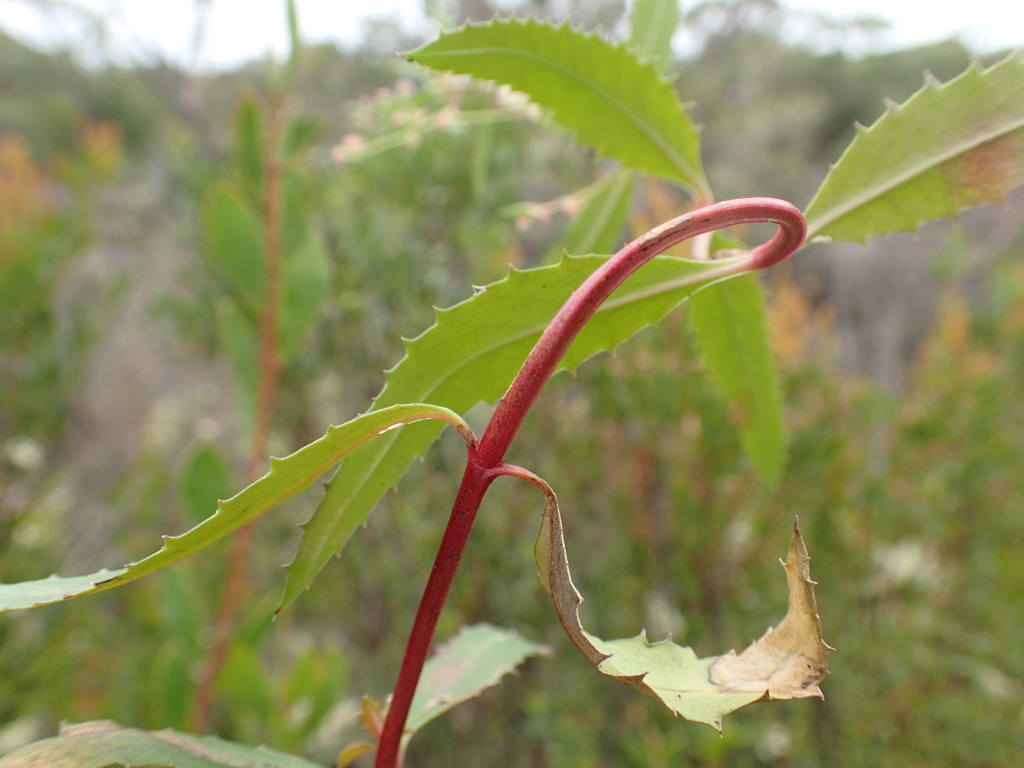Haloragis exalata var. exalata
Square RaspwortPerennial shrub 0.3–1.5 m tall; stems 4-angled, scabrous. Leaves opposite, becoming alternate below inflorescence, lanceolate, mostly 60–100 mm long, 13–25 mm wide, scabrous, sessile or shortly petiolate, margins serrate or biserrate; bracts lanceolate, 5–15 mm long, green, serrate; bracteoles linear-lanceolate, to 0.5 mm long, entire, deciduous, brown. Inflorescence 3–7-flowered; pedicels 0.7–1.5 mm long; sepals 4, green or reddish, ovate to triangular, 0.6–1 mm long; petals 4, yellow-green or reddish, 2.4–3.3 mm long; stamens 8; ovary 4-celled, obpyriform, 0.5–0.8 mm long, 4-angled, scabrous, styles 4. Fruit ovoid to obpyriform, usually 1–3 per axil, 2–2.8 mm long, 1.5–2 mm diam., green or reddish, 4-ribbed, smooth or weakly transversely rugose, minutely and sparsely scabrous. Flowers mainly Oct.–Mar.
GleP, VVP, WaP, Gold. Also NSW. Apparently confined to the south-west coast between the Glenelg River and Curdies River where it grows in damp riparian habitats.
This is one of two varieties of H. exalata subsp. exalata. Variety laevis is restircted to central N.S.W. and is distinguished by the non-scabrous stems and leaves.
Jeanes, J.A. (1996). Haloragaceae. In: Walsh, N.G.; Entwisle, T.J., Flora of Victoria Vol. 3, Dicotyledons Winteraceae to Myrtaceae, pp. 887–908. Inkata Press, Melbourne.
 Spinning
Spinning